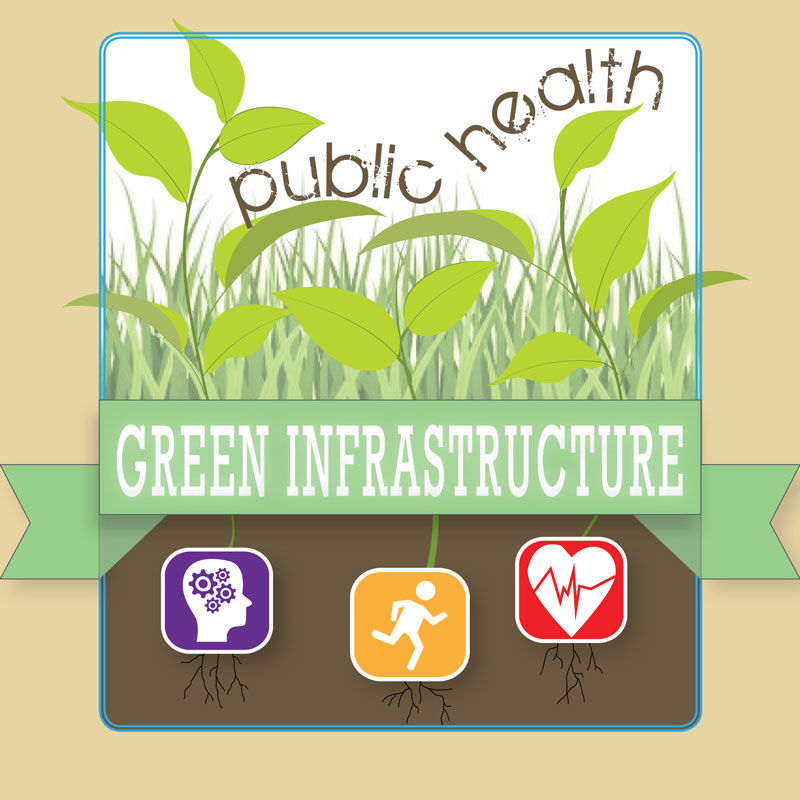They are all examples of green infrastructure that can improve public health. The term green infrastructure refers to landscape features – parks and greenways, green roofs and green streets, etc. – that connect the natural and built environments and provide multiple benefits for people and ecosystems. In a time when chronic conditions such as obesity and diabetes have replaced infectious diseases as society’s “epidemics,” green infrastructure has important contributions to make to the central mission of the public health profession: creating conditions in which people can be healthy.
Let’s return to the three examples. We are all aware of the value of regular exercise that access to a local park can bring. According to a 2010 study by the Economy League of Philadelphia, physical activity on protected open space in southeastern Pennsylvania yields health-related savings of $1.3 billion per year! The urban forest provides benefits such as improved air quality, cooling to counteract the heat island effect (a major public health threat in cities), and even reduced domestic violence (per a study of Robert Taylor Homes in Chicago). Studies have similarly shown that community gardens provide numerous health benefits, including access to fresh produce, improved nutrition, increased physical activity, and better mental health. More information and case studies from across the country are documented in Green Infrastructure: A Landscape Approach, an APA publication written by WRT’s David Rouse and Ignacio Bunster.

